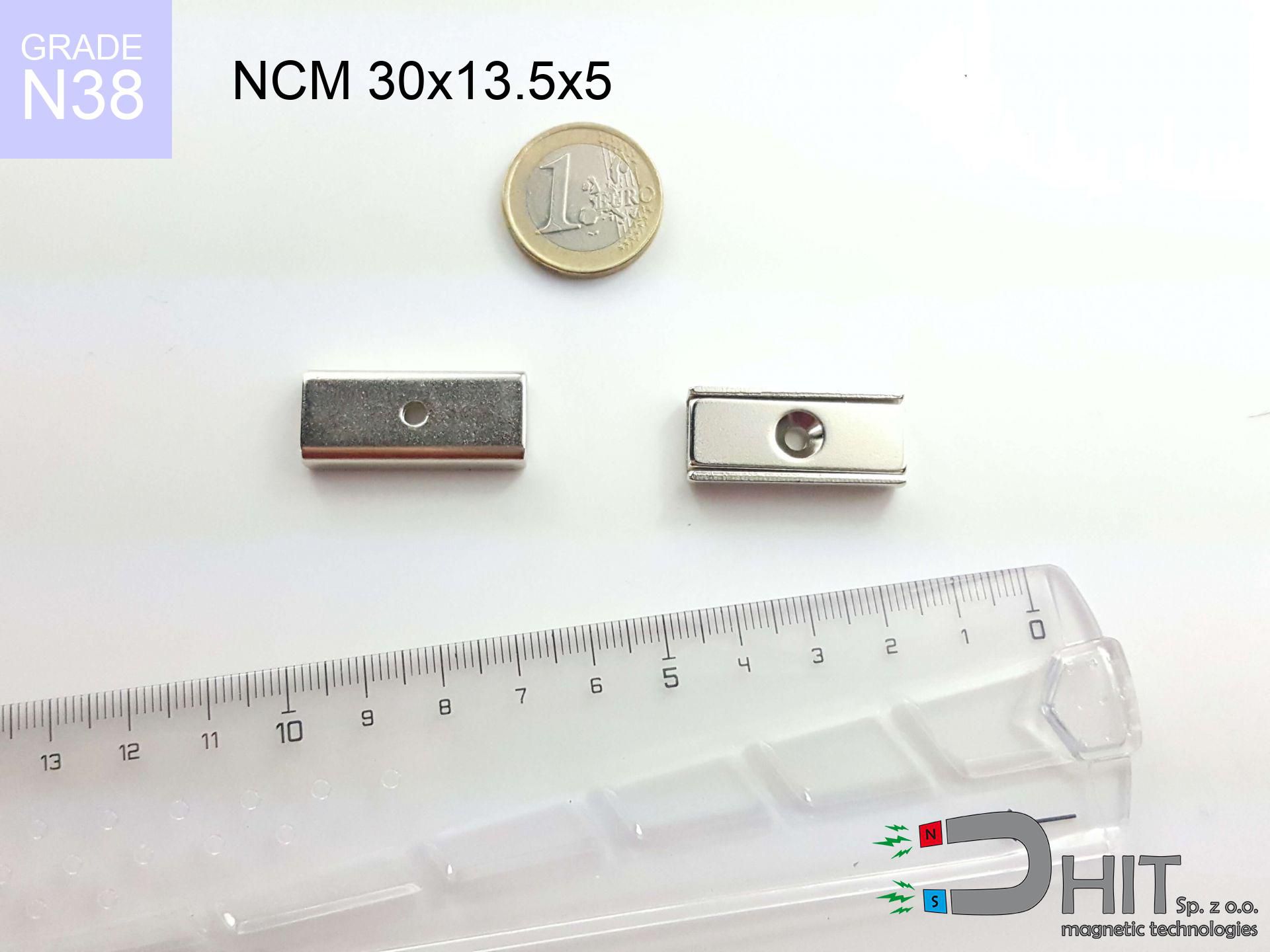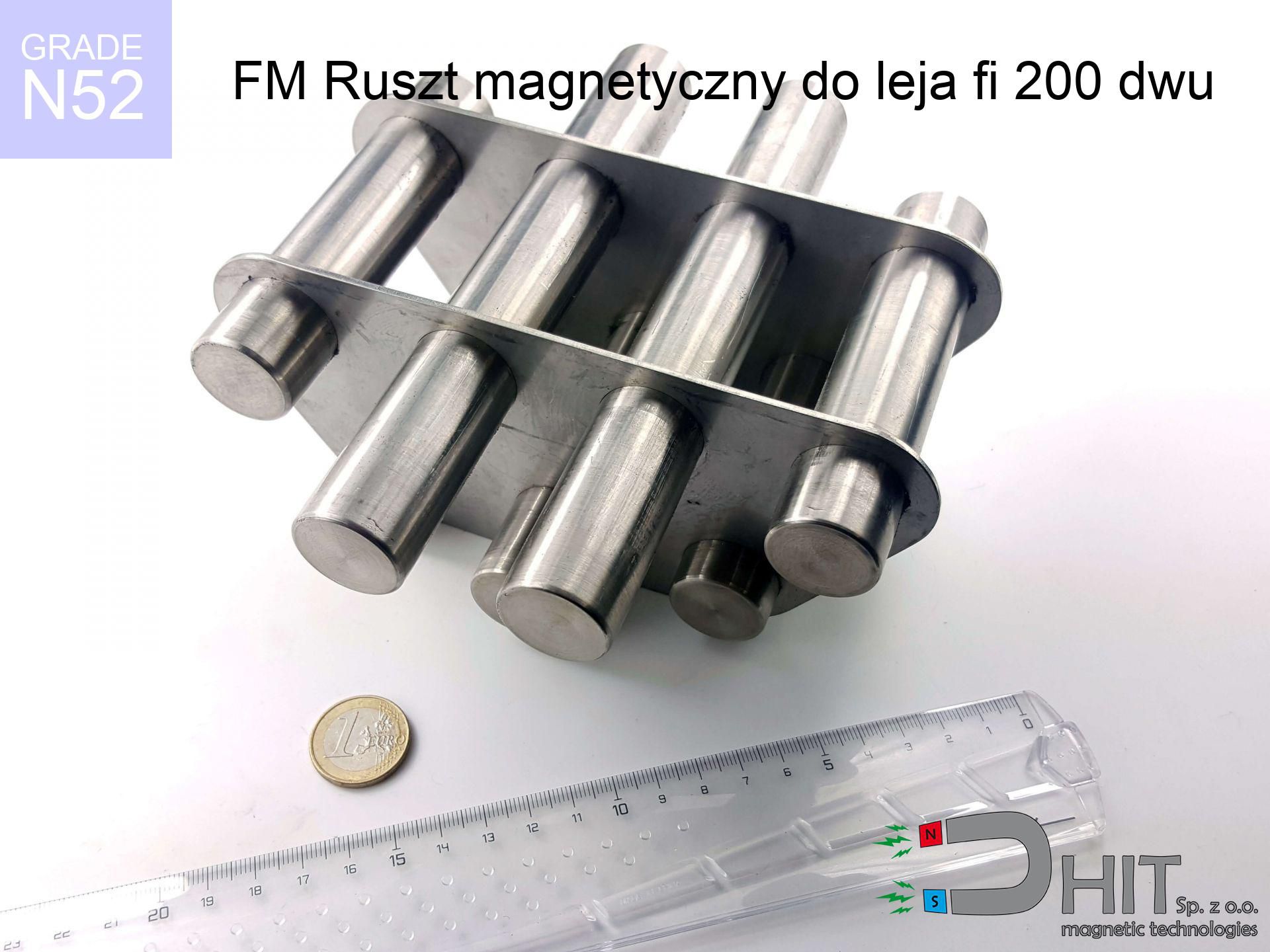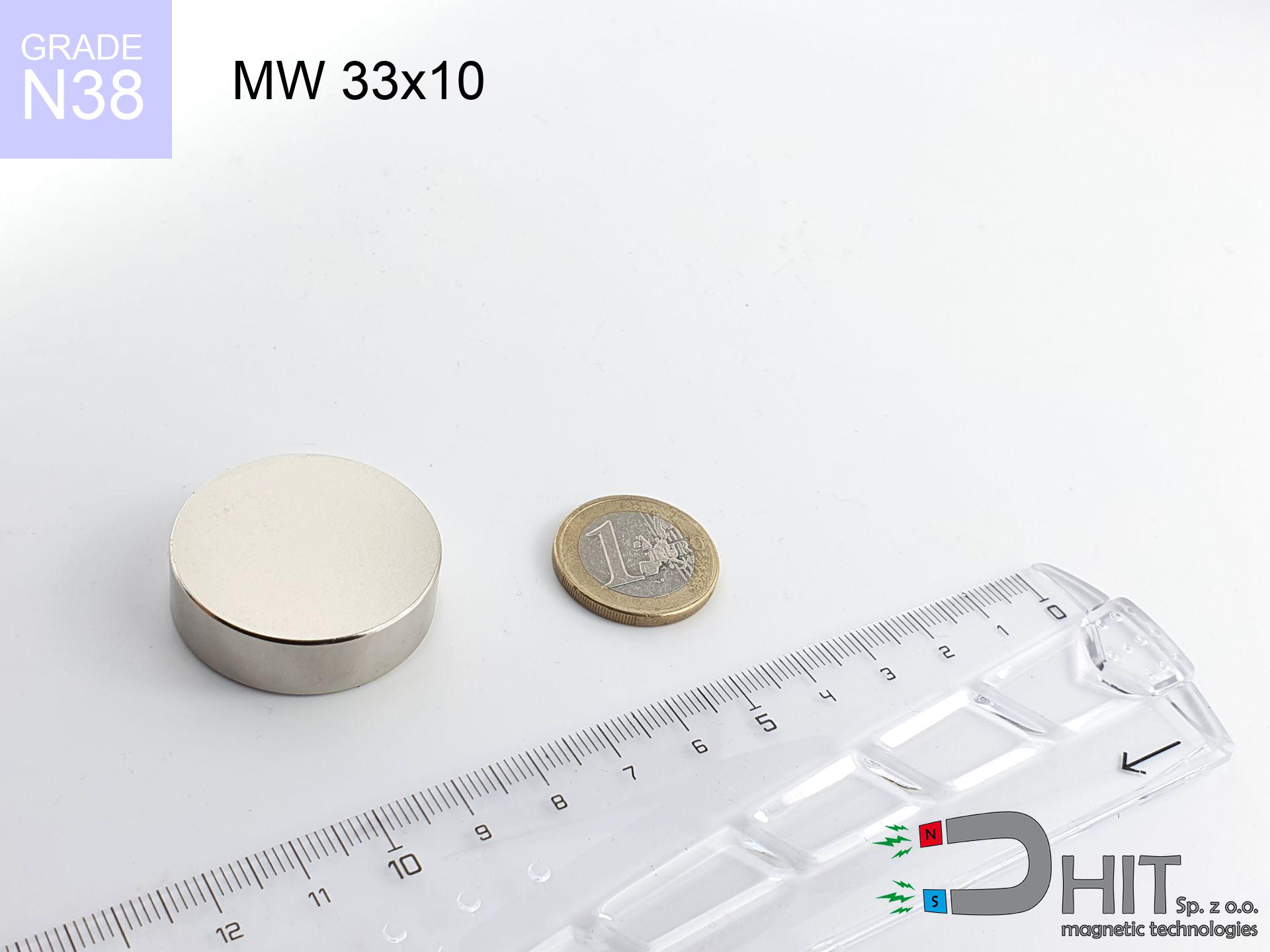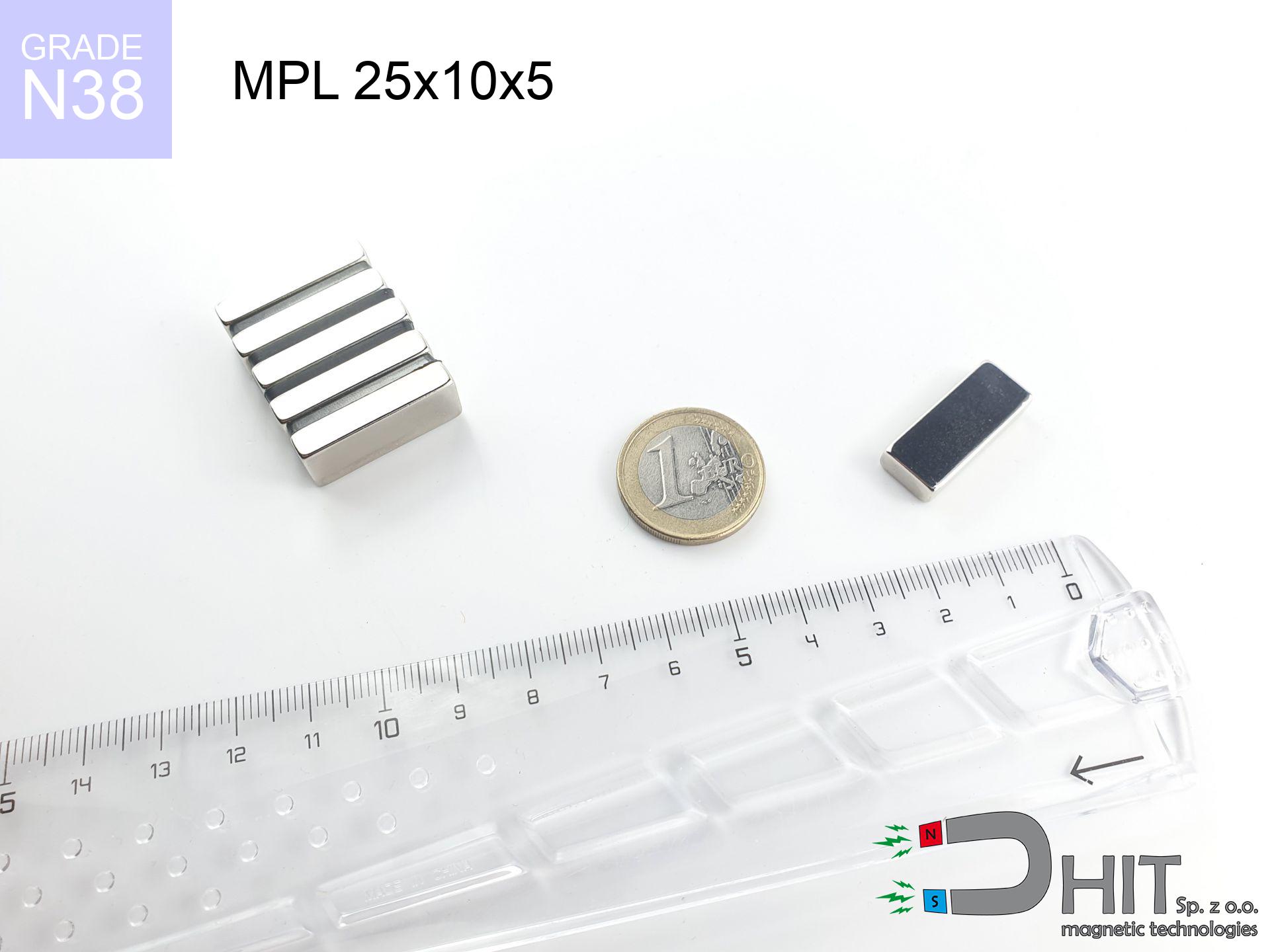SM 25x300 [2xM8] / N52 - magnetic separator
magnetic separator
Catalog no 130373
GTIN/EAN: 5906301813217
Diameter Ø
25 mm [±1 mm]
Height
300 mm [±1 mm]
Weight
1160 g
Magnetic Flux
~ 8 500 Gauss [±5%]
910.20 ZŁ with VAT / pcs + price for transport
740.00 ZŁ net + 23% VAT / pcs
bulk discounts:
Need more?
Contact us by phone
+48 22 499 98 98
alternatively let us know using
inquiry form
the contact form page.
Strength along with form of magnetic components can be calculated with our
magnetic mass calculator.
Same-day shipping for orders placed before 14:00.
Technical data of the product - SM 25x300 [2xM8] / N52 - magnetic separator
Specification / characteristics - SM 25x300 [2xM8] / N52 - magnetic separator
| properties | values |
|---|---|
| Cat. no. | 130373 |
| GTIN/EAN | 5906301813217 |
| Production/Distribution | Dhit sp. z o.o. |
| Country of origin | Poland / China / Germany |
| Customs code | 85059029 |
| Diameter Ø | 25 mm [±1 mm] |
| Height | 300 mm [±1 mm] |
| Weight | 1160 g |
| Material Type | Stainless steel AISI 304 / A2 |
| Magnetic Flux | ~ 8 500 Gauss [±5%] |
| Size/Mount Quantity | M8x2 |
| Polarity | circumferential - 11 poles |
| Casing Tube Thickness | 1 mm |
| Manufacturing Tolerance | ±1 mm |
Magnetic properties of material N52
| properties | values | units |
|---|---|---|
| remenance Br [min. - max.] ? | 14.2-14.7 | kGs |
| remenance Br [min. - max.] ? | 1420-1470 | mT |
| coercivity bHc ? | 10.8-12.5 | kOe |
| coercivity bHc ? | 860-995 | kA/m |
| actual internal force iHc | ≥ 12 | kOe |
| actual internal force iHc | ≥ 955 | kA/m |
| energy density [min. - max.] ? | 48-53 | BH max MGOe |
| energy density [min. - max.] ? | 380-422 | BH max KJ/m |
| max. temperature ? | ≤ 80 | °C |
Physical properties of sintered neodymium magnets Nd2Fe14B at 20°C
| properties | values | units |
|---|---|---|
| Vickers hardness | ≥550 | Hv |
| Density | ≥7.4 | g/cm3 |
| Curie Temperature TC | 312 - 380 | °C |
| Curie Temperature TF | 593 - 716 | °F |
| Specific resistance | 150 | μΩ⋅cm |
| Bending strength | 250 | MPa |
| Compressive strength | 1000~1100 | MPa |
| Thermal expansion parallel (∥) to orientation (M) | (3-4) x 10-6 | °C-1 |
| Thermal expansion perpendicular (⊥) to orientation (M) | -(1-3) x 10-6 | °C-1 |
| Young's modulus | 1.7 x 104 | kg/mm² |
Table 1: Rod construction
SM 25x300 [2xM8] / N52
| Parameter | Value | Description / Unit |
|---|---|---|
| Diameter (Ø) | 25 | mm |
| Total length | 300 | mm (L) |
| Active length | 264 | mm |
| Section count | 11 | modules |
| Dead zone | 36 | mm (2x 18mm starter) |
| Weight (est.) | ~1119 | g |
| Active area | 207 | cm² (Area) |
| Housing material | AISI 304 | 1.4301 (Inox) |
| Surface finish | Ra < 0.8 µm | Polished |
| Temp. class | 80°C | Standard (N) |
| Force loss (at max °C) | -12.8% | Reversible loss (physics) |
| Force (calculated) | 18.1 | kg (theor.) |
| Induction (surface) | ~8 500 | Gauss (Max) |
Chart 2: Field profile (11 sections)
Chart 3: Temperature performance
Chemical composition
| iron (Fe) | 64% – 68% |
| neodymium (Nd) | 29% – 32% |
| boron (B) | 1.1% – 1.2% |
| dysprosium (Dy) | 0.5% – 2.0% |
| coating (Ni-Cu-Ni) | < 0.05% |
Ecology and recycling (GPSR)
| recyclability (EoL) | 100% |
| recycled raw materials | ~10% (pre-cons) |
| carbon footprint | low / zredukowany |
| waste code (EWC) | 16 02 16 |
Other proposals
Strengths as well as weaknesses of rare earth magnets.
Benefits
- They virtually do not lose strength, because even after ten years the decline in efficiency is only ~1% (based on calculations),
- They retain their magnetic properties even under external field action,
- The use of an shiny layer of noble metals (nickel, gold, silver) causes the element to be more visually attractive,
- The surface of neodymium magnets generates a concentrated magnetic field – this is one of their assets,
- Made from properly selected components, these magnets show impressive resistance to high heat, enabling them to function (depending on their shape) at temperatures up to 230°C and above...
- Thanks to the ability of accurate forming and adaptation to unique solutions, neodymium magnets can be created in a wide range of forms and dimensions, which amplifies use scope,
- Significant place in electronics industry – they are used in data components, electric drive systems, medical devices, and technologically advanced constructions.
- Relatively small size with high pulling force – neodymium magnets offer high power in small dimensions, which makes them useful in compact constructions
Cons
- They are prone to damage upon too strong impacts. To avoid cracks, it is worth securing magnets in special housings. Such protection not only protects the magnet but also improves its resistance to damage
- We warn that neodymium magnets can lose their power at high temperatures. To prevent this, we suggest our specialized [AH] magnets, which work effectively even at 230°C.
- Magnets exposed to a humid environment can corrode. Therefore while using outdoors, we advise using water-impermeable magnets made of rubber, plastic or other material protecting against moisture
- Due to limitations in realizing threads and complicated shapes in magnets, we recommend using cover - magnetic mechanism.
- Potential hazard resulting from small fragments of magnets can be dangerous, in case of ingestion, which gains importance in the aspect of protecting the youngest. Additionally, tiny parts of these devices are able to be problematic in diagnostics medical when they are in the body.
- Higher cost of purchase is a significant factor to consider compared to ceramic magnets, especially in budget applications
Holding force characteristics
Maximum lifting capacity of the magnet – what affects it?
- using a base made of low-carbon steel, functioning as a magnetic yoke
- with a thickness minimum 10 mm
- characterized by even structure
- without the slightest air gap between the magnet and steel
- for force applied at a right angle (in the magnet axis)
- at temperature room level
Determinants of lifting force in real conditions
- Clearance – existence of foreign body (rust, tape, gap) acts as an insulator, which lowers power steeply (even by 50% at 0.5 mm).
- Angle of force application – maximum parameter is available only during pulling at a 90° angle. The resistance to sliding of the magnet along the plate is standardly several times lower (approx. 1/5 of the lifting capacity).
- Element thickness – for full efficiency, the steel must be adequately massive. Thin sheet limits the lifting capacity (the magnet "punches through" it).
- Metal type – not every steel attracts identically. Alloy additives weaken the attraction effect.
- Plate texture – smooth surfaces guarantee perfect abutment, which increases field saturation. Rough surfaces weaken the grip.
- Operating temperature – neodymium magnets have a sensitivity to temperature. When it is hot they lose power, and at low temperatures gain strength (up to a certain limit).
Holding force was measured on a smooth steel plate of 20 mm thickness, when the force acted perpendicularly, however under attempts to slide the magnet the load capacity is reduced by as much as fivefold. Additionally, even a small distance between the magnet and the plate decreases the load capacity.
Precautions when working with neodymium magnets
Permanent damage
Avoid heat. NdFeB magnets are susceptible to temperature. If you need resistance above 80°C, inquire about HT versions (H, SH, UH).
Threat to navigation
A strong magnetic field interferes with the operation of magnetometers in smartphones and GPS navigation. Keep magnets near a smartphone to avoid breaking the sensors.
Respect the power
Use magnets with awareness. Their powerful strength can shock even professionals. Stay alert and do not underestimate their power.
Fire risk
Fire warning: Rare earth powder is explosive. Avoid machining magnets without safety gear as this risks ignition.
Fragile material
Neodymium magnets are ceramic materials, which means they are very brittle. Collision of two magnets will cause them shattering into shards.
Life threat
For implant holders: Powerful magnets disrupt electronics. Keep at least 30 cm distance or request help to work with the magnets.
Cards and drives
Very strong magnetic fields can corrupt files on credit cards, HDDs, and other magnetic media. Stay away of min. 10 cm.
Skin irritation risks
Some people suffer from a sensitization to Ni, which is the common plating for NdFeB magnets. Frequent touching might lead to skin redness. We strongly advise wear protective gloves.
Pinching danger
Pinching hazard: The attraction force is so great that it can result in hematomas, crushing, and even bone fractures. Use thick gloves.
Swallowing risk
Adult use only. Tiny parts pose a choking risk, causing serious injuries. Keep out of reach of children and animals.

![Magnetic bar SM 25x300 [2xM8] / N52 Magnetic bar SM 25x300 [2xM8] / N52](https://cdn3.dhit.pl/graphics/banners/magnet.webp)
![SM 25x300 [2xM8] / N52 - magnetic separator](https://cdn3.dhit.pl/graphics/products/sm-25x300-2xm8-dij.jpg)





